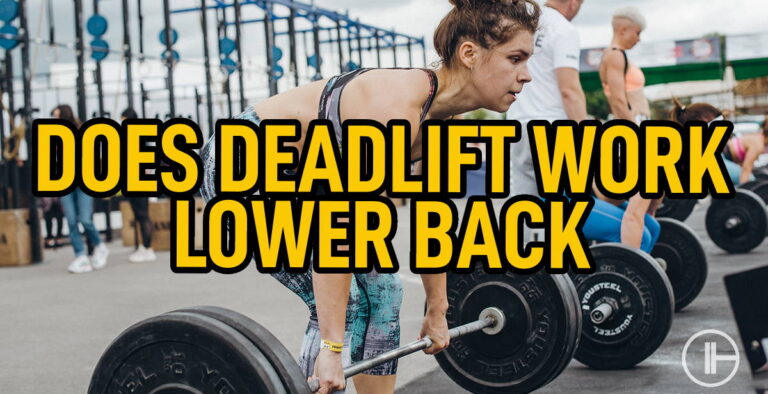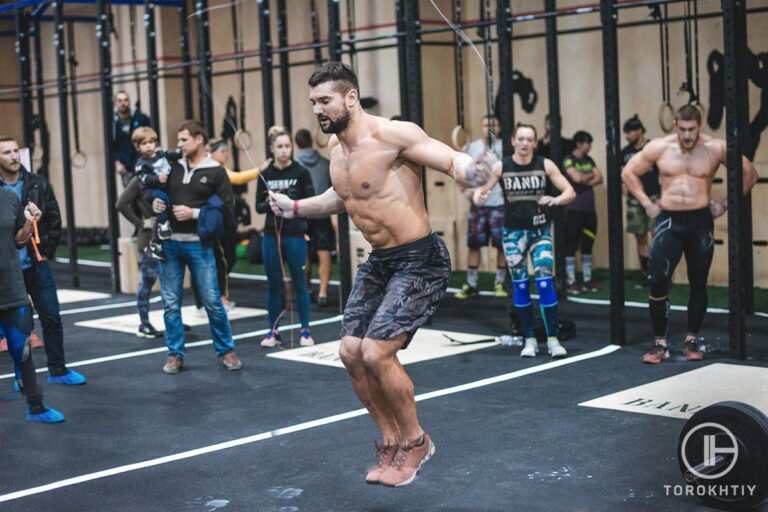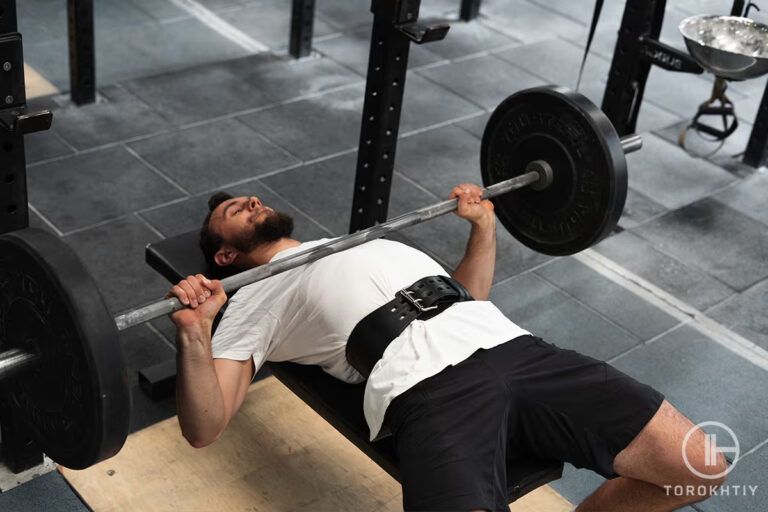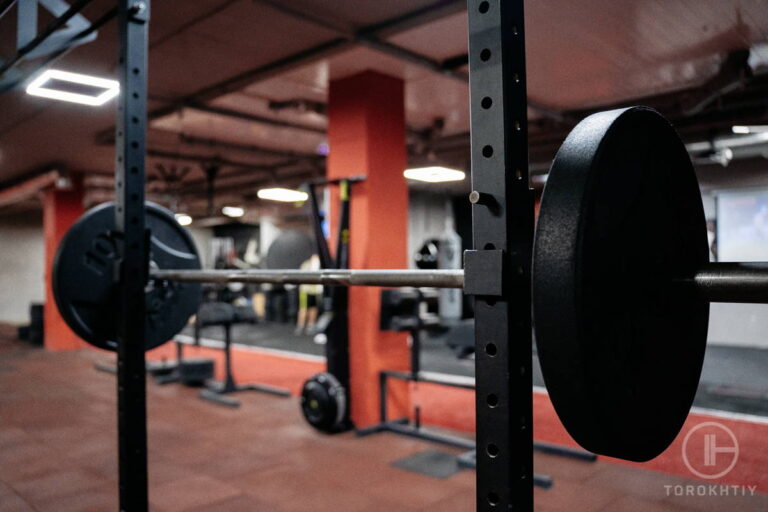Full Rack vs Half Rack: Everything You Need to Know
There can be no gym setup without a squat rack, at least not for a lifter who means business. It lets you master whatever squat routines you have in mind, but that’s not all. You also get to do all sorts of workout drills, from weightlifting to pull-ups.
In fact, there’s hardly any drills you can’t do on a squat rack! Which squat rack to get is a whole dilemma. Full rack vs half rack, the battle keeps raging. Here’s the short answer.
Full Rack vs Half Rack: Half racks suit home gyms better because they save space while providing enough stability and safety for most drills. Power racks are a commercial gym’s dream because there’s almost no drill it can’t take.
Both racks are impressive pieces of equipment. Both have their merits, but this is about which one is best for you. I’m here to help with that.
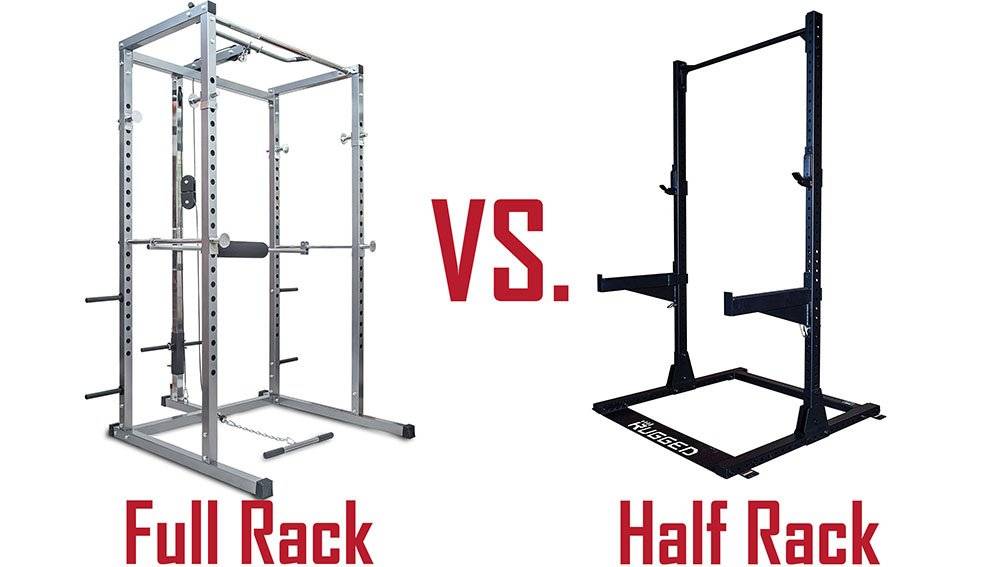
Full Rack vs Half Rack
The difference between the full and half racks is as clear as day. The full rack is bigger, sturdier, and more sophisticated, while the half rack is more flexible and takes up less space. The question is: which one is best for you? Let’s find out!
To answer this burning question, we must first take a good look at both the full rack and the half rack.
What is a power rack?
The full rack, also called a power rack, is basically a large “cage” that serves to enhance workouts in a gym. It usually has four upright bars shooting out of a metal base. Connecting bars across the cage make the full rack even sturdier.
One of the biggest benefits of the power rack is it lets you train without a spotter. Those heavy bars stand guard so you can train to your heart’s desire in the safety of the power rack’s sturdy bars. The frame is so stable that you can pile up as much weight as you want and it won’t budge an inch.
This stability makes the power rack especially desirable to experienced or professional lifters and commercial gyms.
I know what you’re thinking. The power rack takes half rack vs power rack battle, straight and easy. Not so fast, however, both these incredible pieces of gym equipment each have their pros and cons.
Full rack Pros and Cons
- It’s stable enough for heavier weights.
- The cage provides maximum safety from falling barbells
- No need for a spotting assistant
- Extra bars and pulleys can be attached for a variety of drills.
- It consumes more space than a squat rack.
- Freedom and ease of movement might be an issue when working out within the cage
- Relatively expensive
- It may require permanent fixing to the floor for added stability.
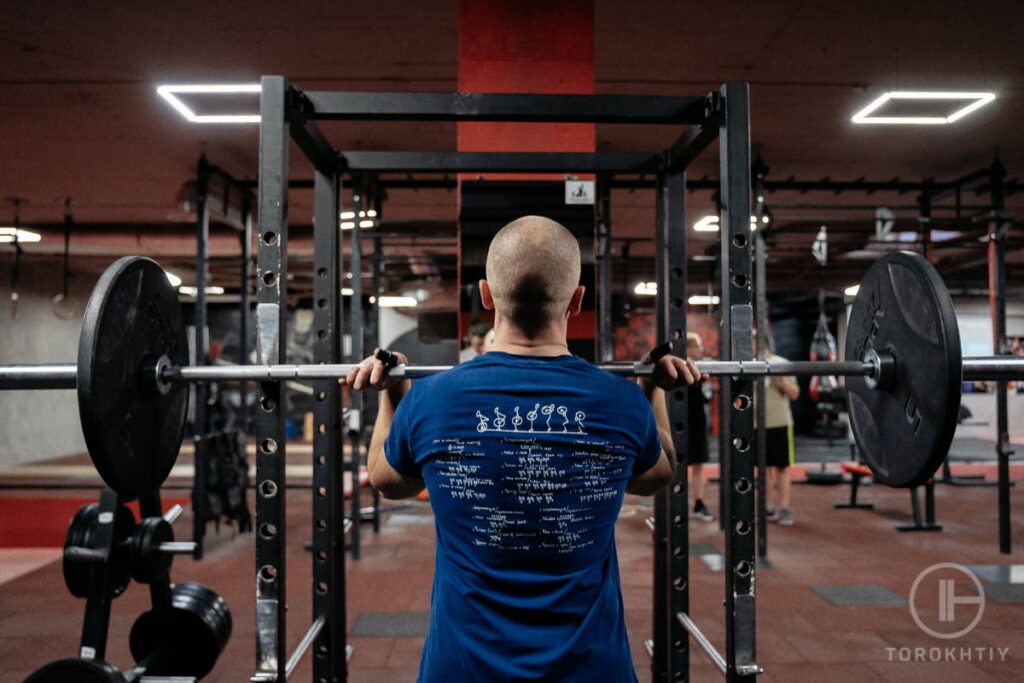
Our recommended power racks:
Titan Fitness T-3 Series Power Rack
Simple but efficient, this power rack is built to make even the most grueling workout a seamless experience. It features four upright square pillars bolted to the ground for maximum stability with connecting bars that make it even more stable, if you can believe it.
It’s furnished with a wide array of accessories such as a 1.25-inch pull-up bar, a 2-inch fat pull-up bar, and (2) reinforced J-Hooks, but that’s not all. You can mix up your drills with extra accessories such as roller J-hooks and adjustable lever arms.
The T-3 Series boasts a total rack capacity of 4,400lbs so that as you push yourself to whatever limits you want, safety is the one thing you won’t be sweating about.
Interested? Check out the Titan Fitness T-3 Series Power Rack and get lifting.

Rogue Fitness RML-390F Flat Foot Monster Lite Rack
This monster of a power rack is designed to give you full stability with little hassle. You don’t even have to bolt it into the floor because of its flat foot base. Your floor can breathe easy and you get the extra flexibility of being able to move around however you want.
The RML-390F can take whatever weight you throw at it without budging and is easy to assemble if you follow the instructions. Stability, convenience and a dream experience are all on offer here.
If you want some of that, check out the Rogue RML-390F Flat Foot Monster Rack. It’s as impressive as it sounds.
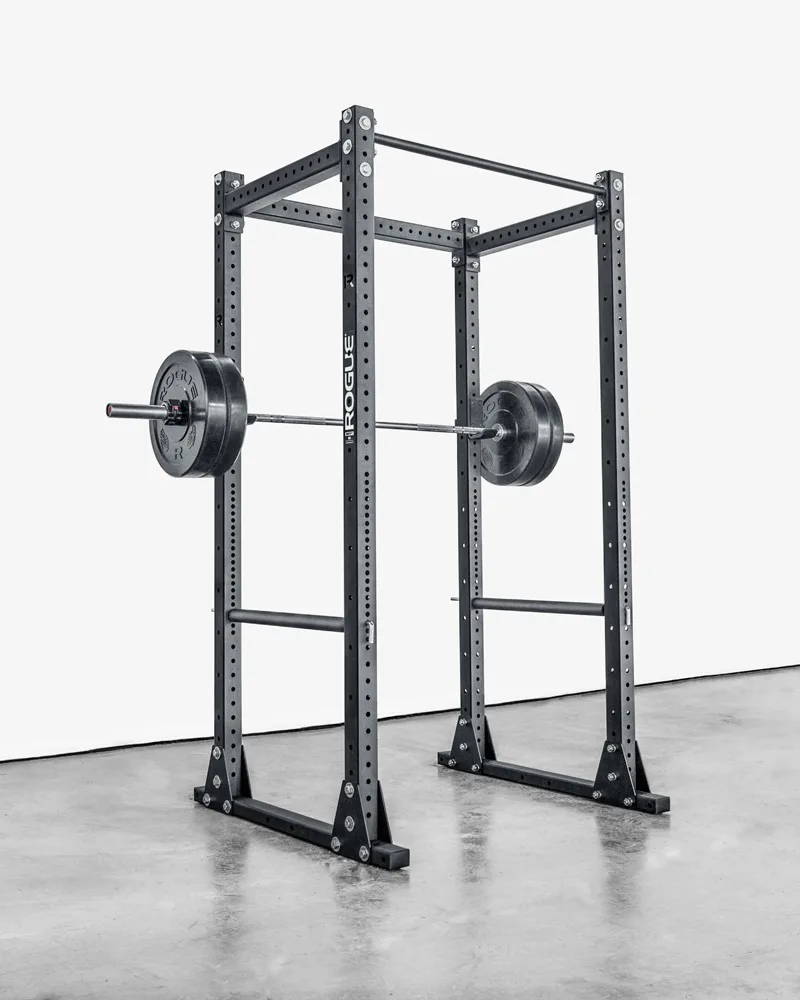
What’s a half rack?
The name gives it away. The half rack, or half power rack, is simply a smaller version of the full rack. It consists of two upright bars shooting up from a metal base with one connecting bar for added stability. It also comes with two smaller bars that act as a spotter by holding up your barbells.
The half rack is lighter and smaller, but still very stable and convenient. It suits both experienced powerlifters and newbies looking to build the habit. It’s also easier to assemble if you’re looking to set up a home gym or a small gym space at the office.
Half rack pros and cons
- Less expensive
- They occupy less space
- They’re more flexible and give more space for workouts
- Less sophisticated
- They’re lighter and unsuitable for heavier weights
- They’re not as safe and hazard proof

Our recommended half racks:
THE ROGUE HR-2 HALF RACK
Most half power racks consist only of the base, two upright bars, and a connecting bar. This makes them not quite as stable as you’d want sometimes. Not the HR-2 half rack! This exquisite half rack features an extra set of steel uprights and connecting bars that make it almost as stable as a full power rack.
The extra set of steel uprights adds not only extra stability, but an extra foot and a half of inside space for whatever drills you have in mind. It’s a great option if you don’t have enough space for the full rack, but still want that extra stability.One reviewer described it as “friggin perfect”.
Don’t take my word for it. Check out the Rogue HR-2 Half Rack for yourself.
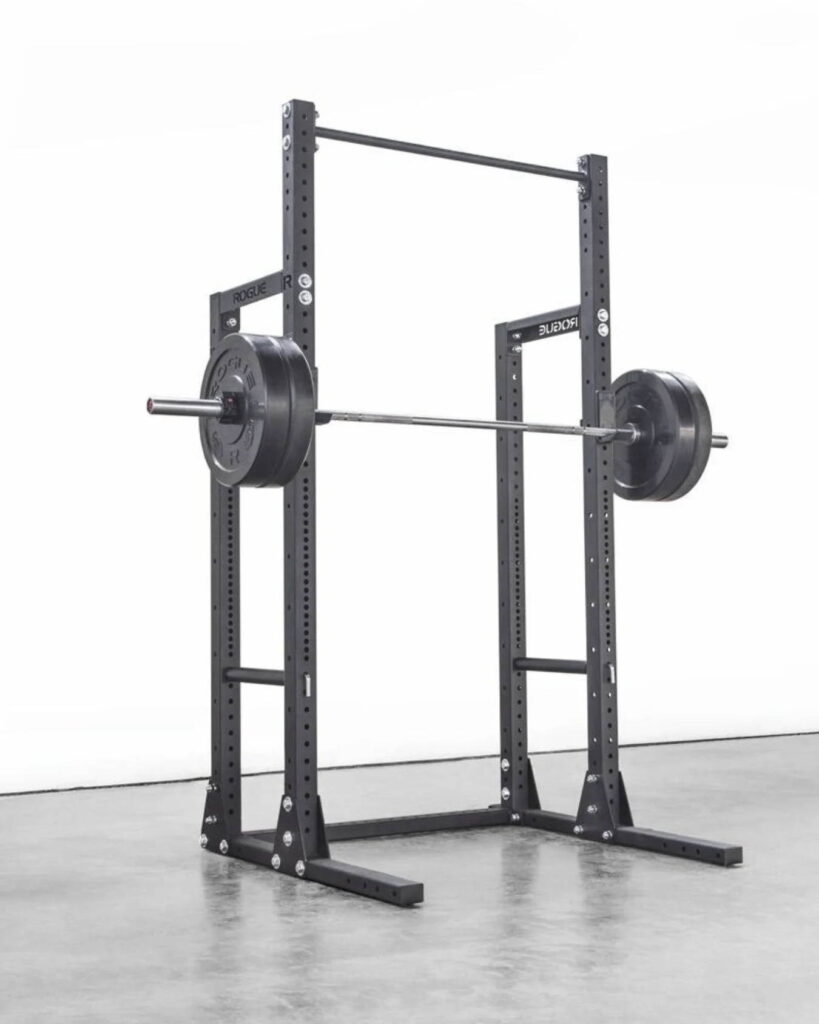
REP FITNESS APOLLO RACK BUILDER
This half rack is basically a full rack for lifters who’d rather work outside the cage. It features four upright bars just like a full rack, but with less inside depth and a flat foot base that provides every lifter’s dream: stability.
Whatever the drill, you can give it your all knowing fully well that your half rack cage is more than capable of handling whatever you throw at it. The Apollo gives you all the stability of a full rack without taking as much space or budget.
Whether you want to save space or reduce the budget, the Apollo rack builder is perfect. You can even customize it to different heights, colors, and depths so it’s not just a great rack, but a great rack for you.
Check out the Apollo Rack Builder.
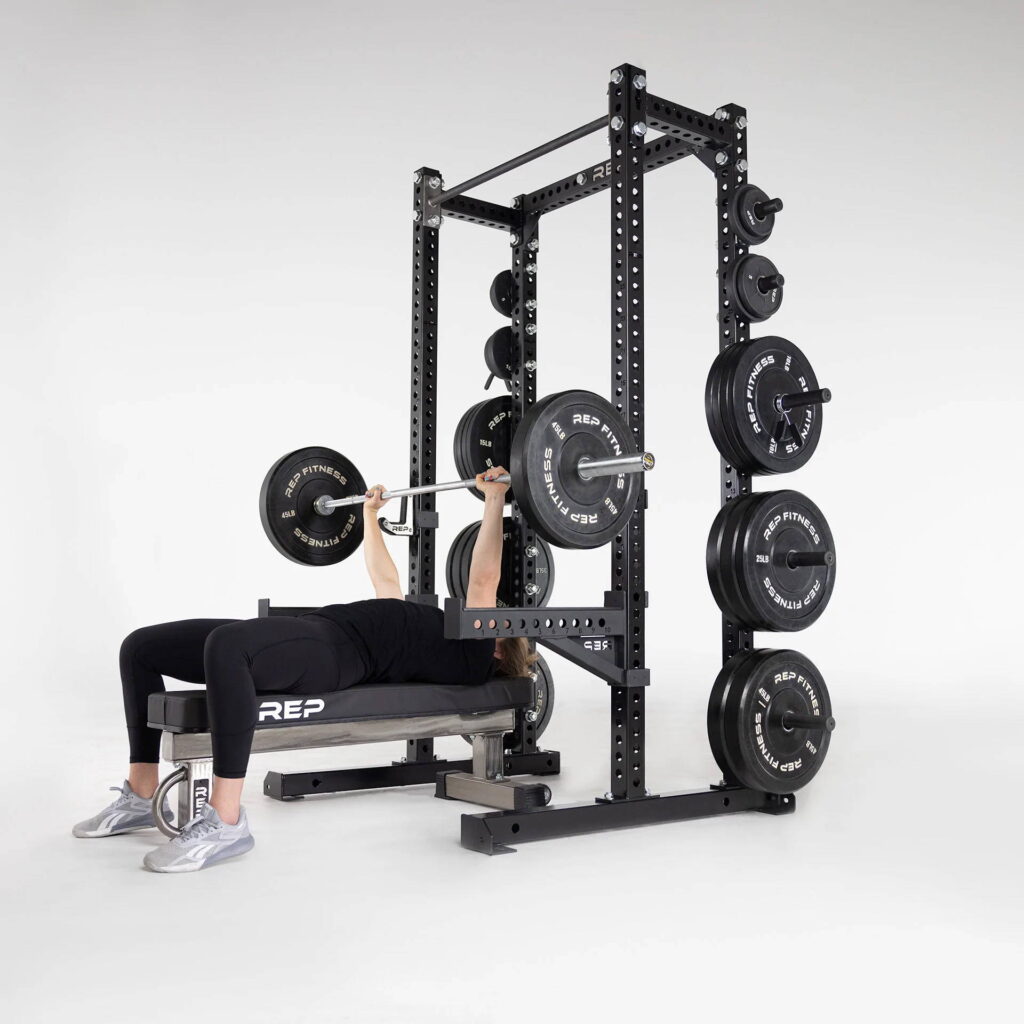
Small gyms have no business accommodating a full power rack, that much is clear. In fact, half power racks are too much for some. Power rack vs half rack is the more popular debate, but for most small gyms, there’s a different battle: half rack vs squat stand.
Half Rack vs Squat Stand
You already know what a half rack is, but what is a squat stand? It is the simplest squat rack setup available. It consists of two upright posts that can be linked at the bottom and top by connecting bars. Squat stands can stand independently in some cases. There are three major types of squat stands:
1. Twin-linked squat stand
This squat stand is similar to the squat stand, but not as sophisticated. It features two upright posts linked at the bottom, and sometimes at the top, by connecting bars.
2. Independent
This squat stand simply features two independent vertical posts that have to be arranged properly to form a rack. You can easily set them up when you’re ready to lift and move them to a corner afterwards.
3. Wall mounted
The name gives it away. It consists of two vertical poles fixed into the wall to form a rack. Easy to use, and takes almost no space at all. Wall mounted squat stands can be foldable or non-foldable.
Squat Stand Pros and Cons
- They take up the least space
- They’re ideal for working outside a rack cage
- They are the easiest to assemble
- They cost the least
- They have the lowest weight capacity
- They allow for less variety of drills
- They are the least stable
- They have less customization and accessory options
Our recommended squat stand:
ROGUE SML-2 MONSTER LITE SQUAT STAND
The SML-2 is a twin-linked squat stand that is unrivaled for stability among squat stands. Its two upright bars are rooted to the ground with a wide steel base that extends outwards on either side. A single connecting bar across the top makes it even sturdier.
The SML-2 allows a wide variety of workout drills from squats to bench and even pull-ups. Its strength and stability let you get creative with your workouts for the best possible experience. You can make it even better by adding extra accessories such as J-cups, safety arms, and a landmine.
You won’t get the half rack cage, but this elegant piece of equipment will let you push your limits without taking up tons of space or making too much of a dent in your account. You can check it out right here.
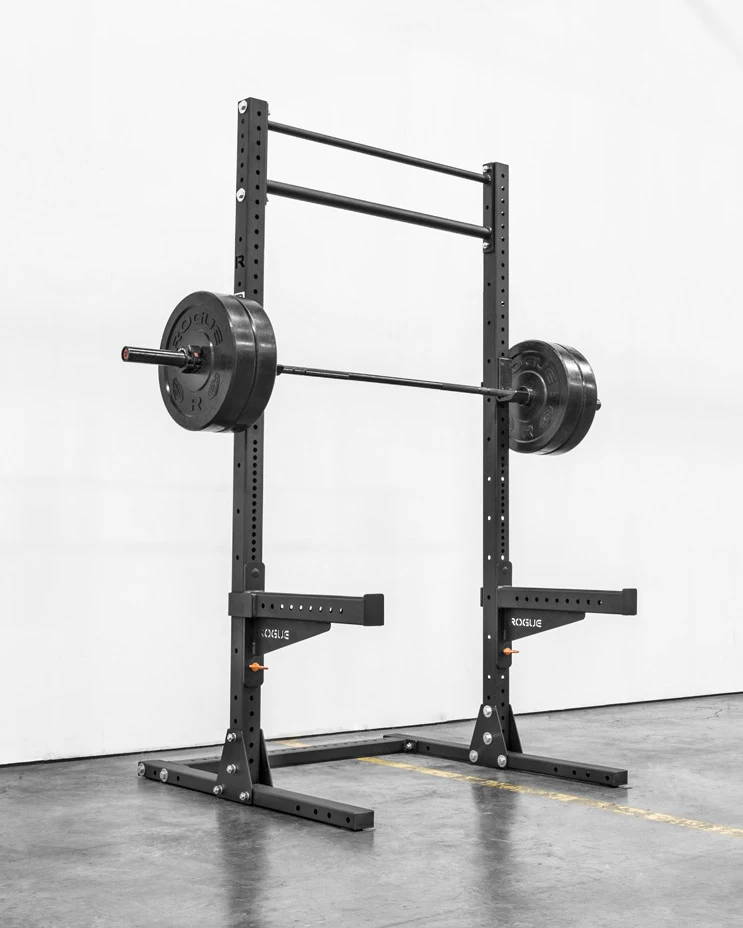
Power Rack vs Half Rack: Head to Head
Squat racks are a must have. The choice in half rack vs full rack largely depends on your condition. In picking which option is best for you, there are some factors we must consider:
Space
Space is the first and most important consideration. As mouth watering as the full rack sounds, it takes tons of space. Its four upright bars (six in some cases) take up almost twice as much space as the half rack’s two bars.
Full racks typically take up to four square feet of ground space and are about seven feet tall. That’s way too big for a small home or office gym.
Be careful to take only what your space can afford.
Price
Another massive factor, arguably even more important than space, is price. Power racks are much more expensive than half racks for obvious reasons. They’re bigger, more stable, and last longer, but a good one can cost up to $2,000 as opposed to under $750 for half racks.
It’s worth stretching the budget if you’re after pure quality, but getting the half rack is just as good for its lower price.
Weight
How much weight you carry is an often neglected consideration. The weight factor has two sides to it. First, how much weight can the rack take? The sturdiest of half racks can probably take 1,000lbs so don’t go weighing your rack down with Olympic weights.
Second, how much can the floor take? Power racks weigh up to 200lbs. Add a 200-pound man lifting up to 1,000lbs and you get a super heavy load on the floor.
Stability
Many people hear me say the full rack is more stable than the half rack and immediately assume the half is a wobbly thing. Nothing could be further from the truth! Half racks are safe and stable, even more so when fixed to the floor.
The half rack starts getting shaky with drills like pull-ups, chin-ups, and most ‘hanging” drills. Huge weights and hanging drills are where the extra stability of the power rack counts.
Durability
A good rack will last as long as you want. What matters is the quality of the rack whether it’s full or half. A Rogue Fitness half rack, for example, will last much longer than a lower quality full rack.
All you have to worry about is finding the right quality. I’ve already mentioned Rogue Fitness, but if your budget won’t let you go that far, there are other good budget squat racks you can get.
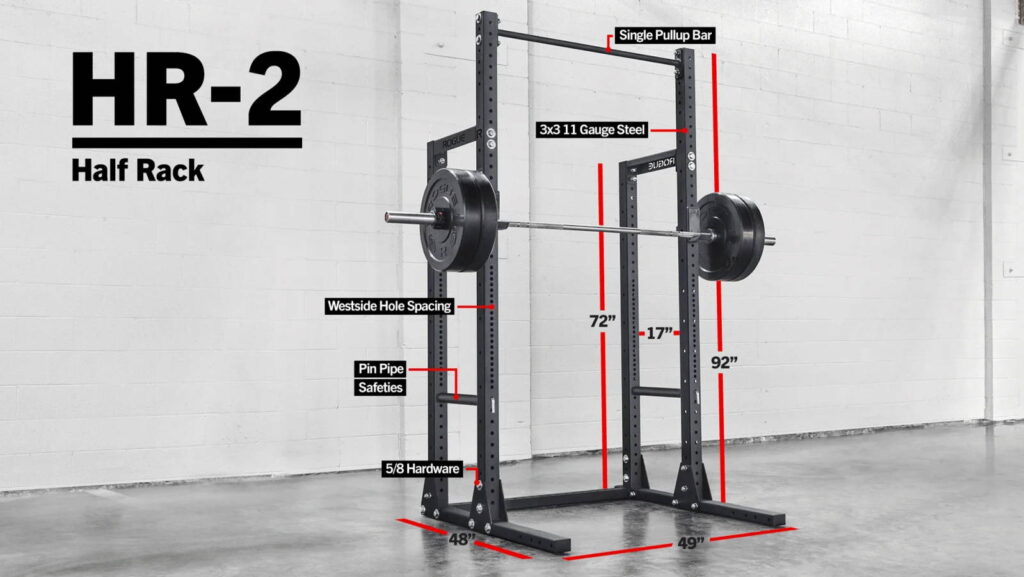
Versatility and Accessories
The full rack has a wide array of accessories you can add. A cable crossover machine and dip station are just two examples, but the full rack allows a nearly infinite number of accessories that you can use for as many drills as you want.
The half rack doesn’t allow as many extra attachments as the full rack. That said, the half rack still allows enough extra attachments to make the experience worthwhile. Overhead presses and rack pulls are examples of common drills on the half rack.
The full rack gives you more accessories, but the half rack gives you more space by letting you work outside the rack cage. This affords a different kind of versatility that the power rack cage does not.
Now that you know exactly what each rack offers, it’s time to answer some questions that may be bothering you.
FAQs
What is the purpose of a half rack?
A half rack is flexible. It serves as a spotter so you can lift your weights in safety. It also provides a stable frame for a variety of drills like squats, bench press, pull-ups, among others.It’s a smaller, less expensive alternative to the power rack.
Do all half racks need to be bolted down?
Bolting down your half rack is not compulsory, especially if it has a flat foot base like the SML-2. That said, the half rack is not as stable as the full rack. Huge weights and hanging drills can make your half rack wobble.
To assure yourself of a sturdy, immovable rack, I would recommend you bolt down your half rack if you can.
Is a half rack better than a full rack?
There’s no yes or no answer to this. It all depends on your conditions. What’s your budget? How much space do you have? What kind of weight are you looking to lift?
All these questions are key in picking a rack for yourself. A commercial gym would rather get a full power rack, but a home gym would be just fine with a half rack. Take all your conditions into consideration and make the right choice for yourself.
How Can I Keep My Floor Safe?
Squat racks are heavy. Add your weight and that of your barbells to it and it gets even heavier so it’s imperative to think about your floor. Place a suitable mat between the floor and the rack to keep your floor safe and healthy.
It also prevents your rack from sliding if you decide not to bolt it down.
Conclusion
You can’t have a decent gym setup without a squat rack. It not only makes your workouts easier, but safer and more effective too. If you’re serious about weights and fitness, a squat rack is must own. That makes picking the right squat rack one of your most important gym decisions.
Whatever rack you’ve chosen to go with, congratulations. It’s a huge leap in your journey to discipline your body, push your limits, and stay as fit as possible.
Now it’s your turn. Which rack would you rather have? Do you fancy the mighty power rack or does the space saving half rack pique your interest? Tell me all about it in the comments,
Be sure to tell me about any awesome products I may have missed too. See you in the comments!
Also read:
- Best Budget Power Rack
- Best Short Squat Racks
- Best Smith Machine Power Rack Combo
- Power Rack vs Squat Rack
- Smith Machine vs Squat Rack
- Squat Rack in Apartment
- Squat Rack Types
- Best Power Rack Attachments
- How Much Does a Squat Rack Cost
References:
- 7 KEYS TO TRAINING SAFELY & LIFTING HEAVY AT HOME WITHOUT A SPOTTER. // GYMCRAFTER:
https://gymcrafter.com/training-alone-without-spotter/ - Top 11 Best Budget Power Rack // Exercise with Style : https://exercisewithstyle.com/best-budget-power-rack/
Why Trust Us?
With over 20 years in Olympic Weightlifting, our team does its best to provide the audience with ultimate support and meet the needs and requirements of advanced athletes and professional lifters, as well as people who strive to open new opportunities and develop their physical capabilities with us.
By trusting the recommendations of our certified experts in coaching, nutrition, dietology, and sports training programming, as well as scientific consultants, and physiotherapists, we provide you with thorough, well-considered, and scientifically proven content. All the information given in the articles concerning workout programming, separate exercises, and athletic performance, in general, is based on verified data. We ensure that you can rely on our professionals’ pieces of advice and recommendations that can be treated as personalized ones which will benefit you and fully meet your needs.
The product testing process is described in more detail here
Author: Ihor Shymechko
Pro Olympic Weightlifter, Coach
Best Results: Snatch – 208 kg,
C&J – 240 kg
Ihor has been a professional weightlifter since 1996, boasting over two decades of competition experience. His notable achievements include clinching the European Championship in 2009 and securing a silver medal in the 105kg division at the Senior World Championships in 2011. Ihor represented his country in the 2008, 2012, and 2016 Summer Olympics. After retiring from competitive weightlifting, he transitioned to coaching, leveraging his vast experience to guide athletes who now compete on both national and international stages.


